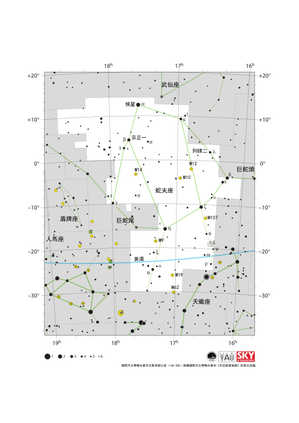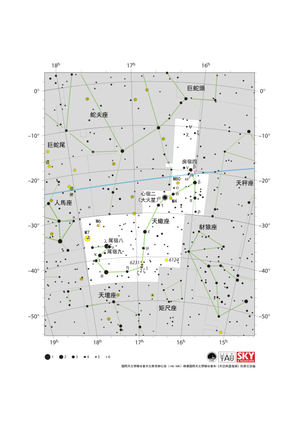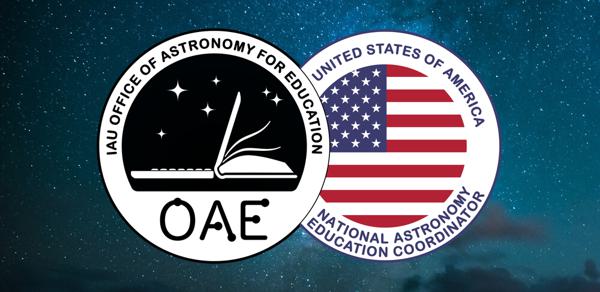Glossary term: 黃道十二宮
Description: 黃道十二宮是天體的一個長條帶,大約在黃道線南北 8 度範圍內。太陽在一年中的視運動和行星的運動都會穿過這條帶子,並與 13 個星座相遇--白羊座、金牛座、雙子座、巨蟹座、獅子座、室女座(俗稱處女座)、天秤座、天蠍座、射手座、蛇夫座、摩羯座、水瓶座和雙魚座--其中大部分星座都代表動物。黃道十二宮這一名字來源於古希臘語,意為小動物的循環(或週期)。
Related Terms:
See this term in other languages
Term and definition status: The original definition of this term in English have been approved by a research astronomer and a teacher The translation of this term and its definition is still awaiting approval
This is an automated transliteration of the simplified Chinese translation of this term
The OAE Multilingual Glossary is a project of the IAU Office of Astronomy for Education (OAE) in collaboration with the IAU Office of Astronomy Outreach (OAO). The terms and definitions were chosen, written and reviewed by a collective effort from the OAE, the OAE Centers and Nodes, the OAE National Astronomy Education Coordinators (NAECs) and other volunteers. You can find a full list of credits here. All glossary terms and their definitions are released under a Creative Commons CC BY-4.0 license and should be credited to "IAU OAE".
If you notice a factual or translation error in this glossary term or definition then please get in touch.
Related Media
守護星辰與大海
Credit: Likai Lin/IAU OAU
License: CC-BY-4.0 Creative Commons 姓名標示 4.0 國際 (CC BY 4.0) icons
Related Diagrams
蛇夫座星圖
Credit: 國際天文學聯合會天文教育辦公室(IAU OAE)根據國際天文學聯合會和《天空與望遠鏡》的原文改編
License: CC-BY-4.0 Creative Commons 姓名標示 4.0 國際 (CC BY 4.0) icons
鯨魚座星圖
Credit: 國際天文學聯合會天文教育辦公室(IAU OAE)根據國際天文學聯合會和《天空與望遠鏡》的原文改編
License: CC-BY-4.0 Creative Commons 姓名標示 4.0 國際 (CC BY 4.0) icons
天秤座星圖
Credit: 國際天文學聯合會天文教育辦公室(IAU OAE)根據國際天文學聯合會和《天空與望遠鏡》的原文改編
License: CC-BY-4.0 Creative Commons 姓名標示 4.0 國際 (CC BY 4.0) icons
天蠍座星圖
Credit: 國際天文學聯合會天文教育辦公室(IAU OAE)根據國際天文學聯合會和《天空與望遠鏡》的原文改編
License: CC-BY-4.0 Creative Commons 姓名標示 4.0 國際 (CC BY 4.0) icons
人馬座星圖
Credit: 國際天文學聯合會天文教育辦公室(IAU OAE)根據國際天文學聯合會和《天空與望遠鏡》的原文改編
License: CC-BY-4.0 Creative Commons 姓名標示 4.0 國際 (CC BY 4.0) icons














